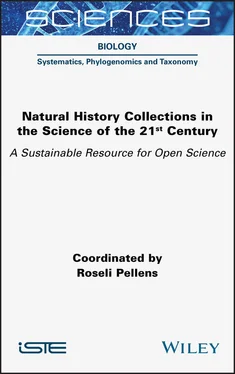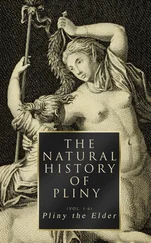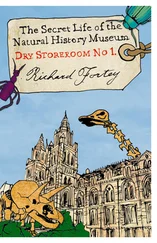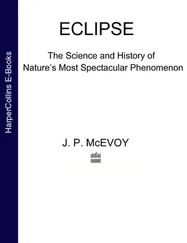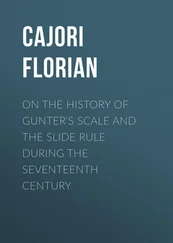Goodwin, Z.A., Harris, D.J., Filer, D., Wood, J.R.I., Scotland, R.W. (2015). Widespread mistaken identity in tropical plant collections. Current Biology , 25(22), R1066–R1067.
Grandcolas, P. (2017a). Loosing the connection between the observation and the specimen: A by-product of the digital era or a trend inherited from general biology? Bionomina , 12(1), 57–62.
Grandcolas, P. (2017b). The living species is not a natural kind but an intellectual construction. In Life Sciences, Information Sciences , Gaudin, T., Lacroix, D., Maurel, M.C., Pomerol, J.C. (eds). ISTE Ltd, London, and John Wiley & Sons, New York.
Justine, J.-L., Winsor, L., Gey, D., Gros, P., Thévenot, J. (2018). Giant worms chez moi! Hammerhead flatworms (Platyhelminthes, Geoplanidae, Bipalium spp., Diversibipalium spp.) in metropolitan France and overseas French territories. PeerJ , 6, e4672.
Le Bras, G., Pignal, M., Jeanson, M.L., Muller, S., Aupic, C. (2017). The French Muséum national d’Histoire naturelle vascular plant herbarium collection dataset. Sci. Data , 4, 170016.
Le Guyader, H. (2003). Classification and Evolution . Le Pommier, Paris.
Linnaeus, C. (1758). Systema Naturae per regna tria naturae, secundum classes, ordines, genera, species, cum characteribus, differentiis, synonymis, locis. Editio decima, reformata, Tomus I . Holmiae, Laurentii Salvii.
Mallet, J. (2008). Hybridization, ecological races and the nature of species: Empirical evidence for the ease of speciation. Philosophical Transactions of the Royal Society B: Biological Sciences , 363(1506), 2971–2986.
Marshall, S.A. and Evenhuis, N.L. (2015). New species without dead bodies: A case for photo-based descriptions, illustrated by a striking new species of Marleyimyia Hesse (Diptera, Bombyliidae) from South Africa. Zookeys , 525, 117–127.
May, R.M. (1988). How many species are there on Earth? Science , 241 (4872), 1441–1449.
May, R.M. (2004). Tomorrow’s taxonomy: Collecting new species in the field will remain the rate-limiting step. Philosophical Transactions of the Royal Society of London B , 359, 733–734.
Meineke, E.K., Davis, C.C., Davies, T.J. (2018). The unrealized potential of herbaria for global change biology. Ecological Monographs , 88, 505–525.
Meyer, C., Kreft, H., Guralnick, R., Jetz, W. (2015). Global priorities for an effective information basis of biodiversity distributions. Nat. Commun ., 6, 8221.
Mills, J.A., Teplitsky, C., Arroyo, B., Charmantier, A., Becker, P.H., Birkhead, T.R., Bize, P., Blumstein, D.T., Bonenfant, C., Boutin, S. et al . (2015). Archiving primary data: Solutions for long-term studies. Trends in Ecology & Evolution , 30, 581–589.
Minteer, B.A., Collins, J.P., Love, K.E., Puschendorf, R. (2014) Avoiding (re)extinction. Science , 344(6181), 260–261.
Nilsson, R.H., Larsson, K.-H., Taylor, A.F S., Bengtsson-Palme, J., Jeppesen, T.S., Schigel, D., Kennedy, P., Picard, K., Glöckner, F.O., Tedersoo, L., Saar, I., Kõljalg, U., Abarenkov, K. (2018). The UNITE database for molecular identification of fungi: Handling dark taxa and parallel taxonomic classifications. Nucleic Acids Research , gky1022-gky1022.
Padial, J.M., Miralles, A., De la Riva, I., Vences, M. (2010). The integrative future of taxonomy. Frontiers in Zoology , 7, 16.
Pautasso, M. and McKinney, M.L. (2007). The botanist effect revisited: Plant species richness, county area, and human population size in the United States. Conservation Biology , 21, 1333–1340.
Pellens, R., Faith, D.P., Grandcolas, P. (2016). The future of phylogenetic systematics in conservation biology: Linking biodiversity and society. In Biodiversity Conservation and Phylogenetic Systematics: Preserving Our Evolutionary Heritage in an Extinction Crisis , Pellens, R. and Grandcolas, P. (eds). Springer, Basingstoke.
Perrier, E. (1886). La philosophie zoologique avant Darwin . Félix Alcan, Paris.
Pleijel, F., Jondelius, U., Norlinder, E., Nygren, A., Oxelman, B., Schander, C., Sundberg, P., Thollesson, M. (2008). Phylogenies without roots? A plea for the use of vouchers in molecular phylogenetic studies. Molecular Phylogenetics and Evolution , 48, 369–371.
Regnier, C., Achaz, G., Lambert, A., Cowie, R.H., Bouchet, P., Fontaine, B. (2015). Mass extinction in poorly known taxa. Proceedings of the National Academy of Sciences , 112(25), 7761–7766.
Rocha, L.A., Aleixo, A., Allen, G., Almeda, F., Baldwin, C.C., Barclay, M.V.L., Bates, J.M., Bauer, A.M., Benzoni, F., Berns, C.M. et al . (2014). Specimen collection: An essential tool. Science , 344(6186), 814–815.
Schilthuizen, M., Vairappan, C.S., Slade, E.M., Mann, D.J., Miller, J.A. (2015). Specimens as primary data: Museums and “open science”. Trends in Ecology & Evolution , 30(5), 237–238.
Suarez, A.V. and Tsutsui, N.D. (2004). The value of museum collections for research and society. Bioscience , 54(1), 66–74.
Tancoigne, E. and Dubois, A. (2013). Taxonomy: No decline, but inertia. Cladistics , 29(5), 567–570.
Tringe, S.G. and Rubin, E.M. (2005). Metagenomics: DNA sequencing of environmental samples. Nature Reviews Genetics , 6, 805–814.
Troudet, J., Grandcolas, P., Blin, A., Vignes-Lebbe, R., Legendre, F. (2017). Taxonomic bias in biodiversity data and societal preferences. Scientific Reports , 7, 9132.
Troudet, J., Vignes-Lebbe, R., Grandcolas, P., Legendre, F. (2018). The increasing disconnection of primary biodiversity data from specimens: How does it happen and how to handle it? Systematic Biology , 67, 1110–1119.
Vaidya, G., Lepage, D., Guralnick, R. (2018). The tempo and mode of the taxonomic correction process: How taxonomists have corrected and recorrected North American bird species over the last 127 years. PLoS One , 13(4), e0195736.
de Vargas, C., Audic, S., Henry, N., Decelle, J., Mahé, F., Logares, R., Lara, E., Berney, C., Le Bescot, N., Probert, I. et al . (2015). Eukaryotic plankton diversity in the sunlit ocean. Science , 348(6237), 1261605.
3
Louis XIV’s Blue Gems: Exceptional Rediscoveries at the French National Museum of Natural History
François FARGES
IMPMC – CNRS, Muséum national d’Histoire naturelle,
Institut universitaire de France, Paris, France
Rare minerals – and more particularly gems – were the preferred instruments of power for past rulers. In the 19th century, these political objects became scientific: gemology was born as a branch of mineralogy. Between thefts, sales, covetousness, fashions and other alienations, the majority of these masterpieces of lapidary art have not survived. The rare historical gems that remain today tell lost or fragmented stories: the history of art – French academic art history has long neglected the expertise of gems, relegating them to a craft without creative inspiration. In a worst-case scenario, its expensive trade would definitely disqualify it from aesthetic research, which is dedicated to a pure Bohemian nature and insensitive to markets. Entire sections of this history are, therefore, unknown and left to various “fashionable storytellers” and others who magnify myths through a literary inventiveness that distorts the work of current reasearchers. Among them is the diamond known in English as the “French Blue”, a misleading name because the gem was never named as such in French but rather as the “ Grand Diamant Violet de Sa Majesté ” (Great Violet Diamond of his Majesty) or the “Great Blue Diamond of Louis XIV”.
Читать дальше
